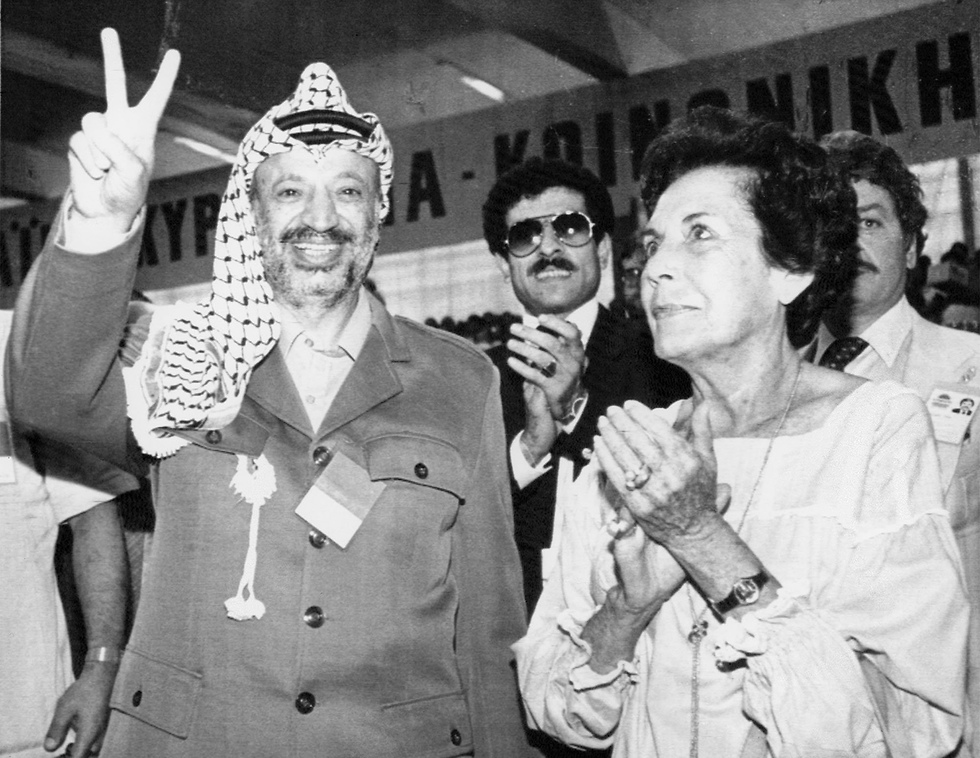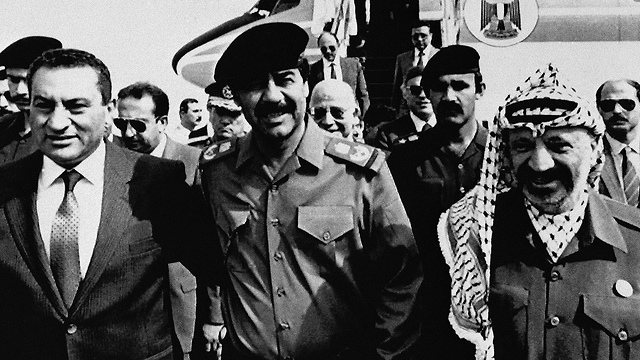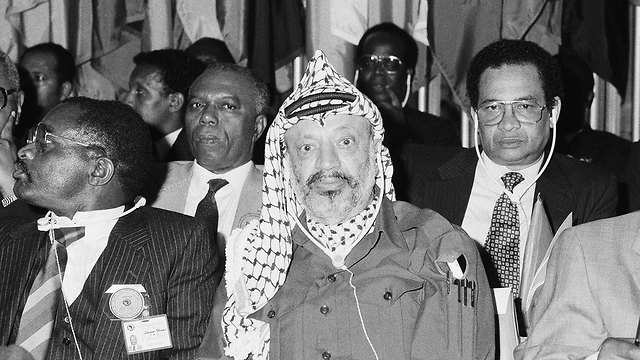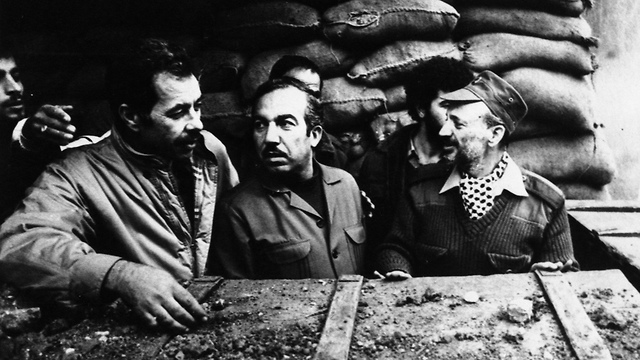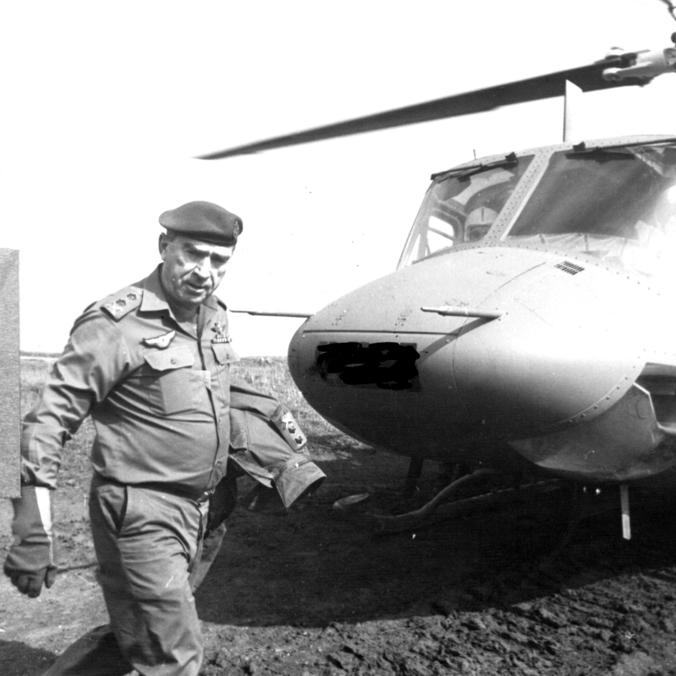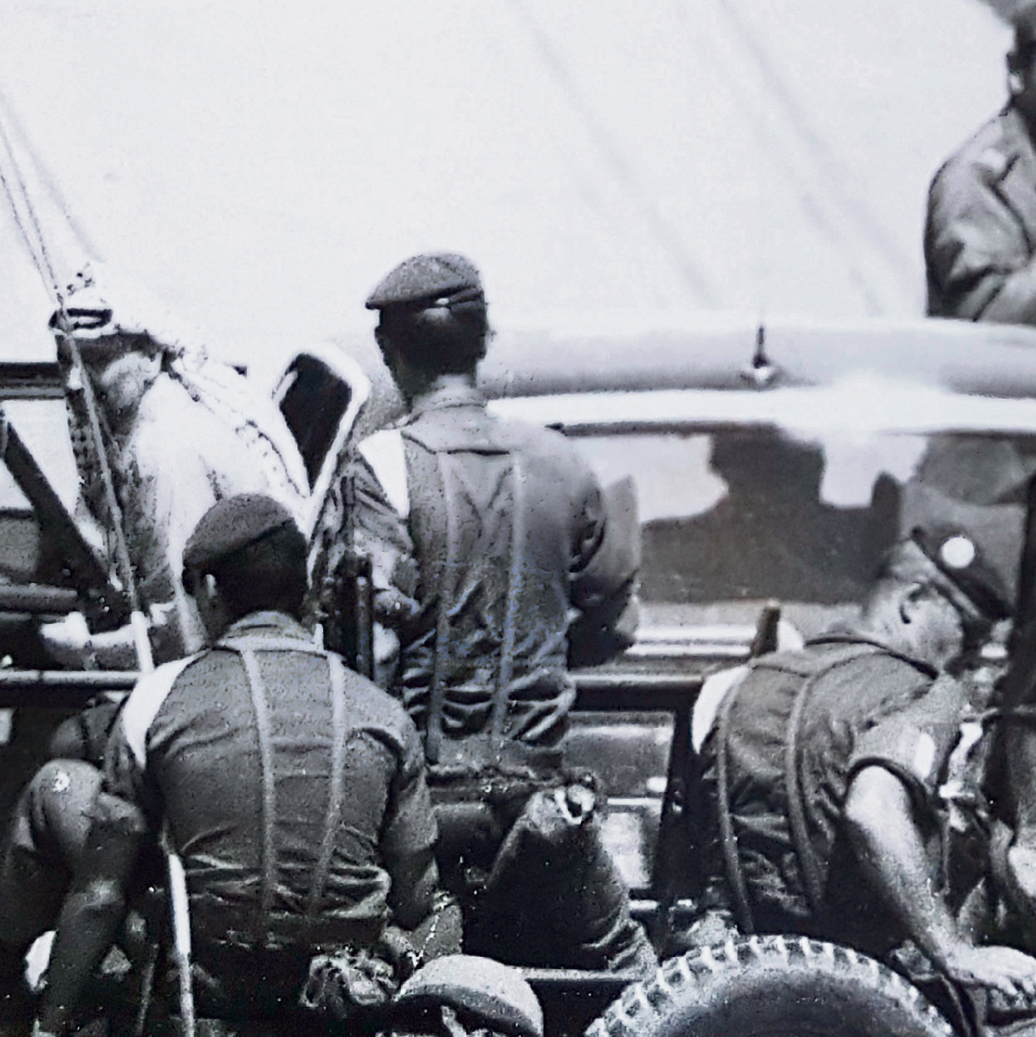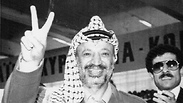

Israel's cat-and-mouse game with Yasser Arafat
For decades, Israel tried unsuccessfully to take down the leader of the PLO; one time, Arafat was in the sights of 5 snipers, but they couldn't take the shot because of a promise Begin made to Reagan; another time, IDF chief Eitan himself took a fighter plane to Beirut and dropped bombs on an office building shortly before Arafat entered it.
Israel's attempt to kill Yasser Arafat by shooting down a Cairo-bound cargo plane he was believed to be on, which was aborted at the last minute, was not the only time the IDF targeted the PLO leader.
Earlier this week, the New York Times published excerpts from "Rise and Kill First: The Secret History of Israel’s Targeted Assassinations," a new book detailing some of the attempts to take out one of Israel's biggest enemies.
New details indicate it was neither the first nor the last time Arafat, who died at age 75 from illness, narrowly escaped an Israeli attempt on his life.
A special team called "Salt Fish" was formed during the war and was tasked with finding and killing Arafat. But he was miraculously saved time and again, with the bombs landing mere minutes after he left a place.
When Arafat realized the Israeli Air Force was targeting him, he started spreading disinformation and made efforts so to ensure he would not be found.
At one point, the Salt Fish team tried to follow three Israeli journalists Uri Avnery and Sarit Yishai and photographer Anat Saragusti who headed to Beirut to interview Arafat. But Arafat's men were able to lose the Israeli tail, and the three journalists "disappeared" in Beirut's alleyways.
A former captain at the Military Intelligence Directorate (MID), who asked to remain anonymous, shed some light on another attempt to shoot down a plane Arafat was supposed to be on in 1982.
"It was one of the most dramatic moments in my life, and I'm sure it wasn't just me," said the captain, who served in the IDF's "Pit," the high command bunker, during and after the first Lebanon War.
At the time, he said, there was a daily meeting headed by the deputy commander of the MID's Research Division about "the head of the fish," the nickname given to Arafat as part of Operation Goldfish to eliminate him. The meeting's participants were tasked with thinking of more and more ways to hurt the Palestinian leader.
"For many months, dozens of people dealt with nothing but this," the captain said.
One morning, the MID received information that the "head of the fish" was about to take a flight from Amman to Tunis. "The Air Force was put on high alert to shoot down the plane. All of the heads of the army came to the Pit," he recounted.
Air Force fighter jets were scrambled to intercept the plane and "were close, very close, to take it down," the captain said. "But then information came in that at about the same time, more planes left Amman. It wasn't clear on which of them Arafat was, and that is why the entire operation was aborted."
But that might not have been the real reason. Very senior officers in the Air Force intentionally sabotaged Operation Goldfish, fearing innocent people would get hurt in the attempts to kill Arafat.
The IDF chief's trip to Beirut
Former IDF chief of staff Rafael Eitan (Raful) was so keen on getting Arafat, that he personally bombed a building in Beirut where the Palestinian leader was said to be.On August 4, 1982, the IDF chief called Aviem Sella, then the head of the Air Force Operations Department, into his office and told him the two of them were "going on a trip" the next day.
"Anything like our last trip together?" asked Sella, alluding to a visit to Beirut in May, in preparation for the invasion and the operation to assassinate Arafat.
"Something like it," Eitan replied. "But from above. Meet me tomorrow morning at Hatzor (airbase). You'll fly the plane, and I'll navigate and operate the combat systems. We're going to bomb Beirut."
The target was a building Yasser Arafat was supposed to be the next day, according to intelligence obtained by the Salt Fish team.
Sella was not sure he was hearing right. "It was totally insane," he said. "I was in shock. If someone had told me that the chief of staff, who isn't really an airman, was taking the head of the Air Force Operations Department for a break in the running of the war while they bombed Beirut, I would never have believed it."
The two met the next day at the Hatzor airbase. They were part of a quartet of Phantoms on an expedition to bomb the al-Sana'i office block in west Beirut.
"Raful's functioning was so-so," Sella said. "I think he was feeling a little bit sick. I did my own navigation. He operated the munitions systems, which by today's terms were rather primitive. We made two bombing runs over the target, and then another one to see if we’d hit it. Raful was happy, and we flew home to Israel."
But Arafat was once again saved by a miracle: The bombs wrecked part of the building just before he arrived.
Sella returned from Hatzor to Tel Aviv to manage the operations of the Air Force, and Eitan took a helicopter ride to Beirut.
"In the evening," Sella recalls, "I saw him on TV, being interviewed on the outskirts of Beirut. He declared that Israel was refraining from bombing targets in civilian surroundings—which was exactly what he had been doing himself that morning."
Then-defense minister Ariel Sharon was so proud of his IDF chief that he told the government's ministers about Eitan's morning raid during a cabinet meeting that evening.
Talking about the need to tighten the siege of Beirut in order to capture Arafat and his men, Sharon said, "I want to present the problem, and I will also ask the IDF chief to speak after he has rested—this morning he participated in an airstrike to examine this himself, and he also hit the target... he's also a pilot. I'm just sorry, Raful, that I implicated you."
In the crosshairs
At the end of the war, Arafat and his men were made to leave Beirut under the careful watch of Sayeret Matkal commandos as well as Mossad and Shin Bet agents.
"We were 180 meters from there," recounted Moshe Ya'alon, who was among the Israeli forces watching the PLO militants leave. "At such a range, with the sniper rifle A., one of the team members, was holding, it would've been very hard to miss."
Others who were there that day said Arafat was in the sights of at least five Israeli snipers at the same time.
One of the commanders was in radio contact with chief of staff Eitan in the command bunker in Tel Aviv, updating him on when Arafat would be out of range. "We can do it. We have him in our sights. Do we have authorization?"
Eitan delayed, and the officer continued: "He's about to go inside, in ten, nine seconds—please give us authorization—eight, seven..."
Finally, Eitan replied: "Negative. I repeat: negative. There is no authorization."
Begin would not break his promise to then-US President Ronald Reagan not to hurt Arafat during the PLO evacuation of Beirut.
Twenty-four hours later, Begin sent the Americans a picture of Arafat in the crosshairs of a sniper's rifle to prove that Israel had stood by its word, despite having a golden opportunity to take the PLO leader out.














